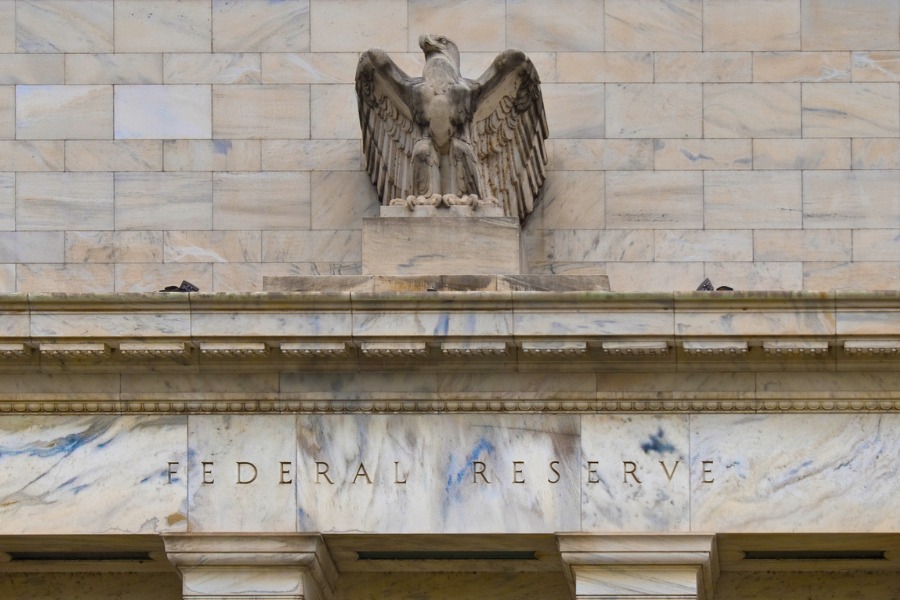

If Treasury and US stock markets are betting on one thing from Jerome Powell at the Jackson Hole symposium Friday, it’s this: He’ll play it safe.
It’s a critical moment for the Federal Reserve chair as he tries to navigate through a month that saw a gauge of equity volatility briefly spike to a generational high and bond traders going all in on bets that the US central bank is on the cusp of slashing interest rates.
By some measures, the annual gathering of policymakers and academics in Wyoming is expected to be an uneventful one. Strategists from JPMorgan Chase & Co. and Deutsche Bank AG expect moderate moves for bonds during the conference while options traders are betting on small swings for stocks in the days ahead. Recent history is on their side.
“The Fed is perfectly fine where we are at now,” said Blake Gwinn, head of US interest rate strategy at RBC Capital Markets. “I don’t think he will feel the need to really make waves here.”
With a few exceptions, the gathering hasn’t been a major market-moving event. Over the past decade, yields on both two- and 10-year notes moved less than 4 basis points on average, data compiled by Bloomberg show. The S&P 500 Index has been more reactionary, fluctuating around 1.3% on average.
“Jackson Hole speeches have not traditionally led to large yield moves,” JPMorgan strategists wrote on Aug. 16. “It is unlikely the Chair will offer too much granularity on the magnitude or pace of easing given the importance of the upcoming August employment report.”
A jolt is not out of the question. The Jackson Hole confab has been the venue where central bankers sometimes signaled major policy initiatives in recent years. Former European Central Bank president Mario Draghi, for instance, laid the groundwork for quantitative easing at the convention in 2014.
Two years ago Powell surprised the market by delivering a hawkish speech from Wyoming, warning investors that fighting inflation would bring “pain” to households and businesses. The S&P 500 tumbled 3.4% that day, while 10-year yields notched an 8-basis-point intraday swing. The selloffs continued in coming weeks as traders boosted expectations for more rate hikes.
Earlier this month, a surprise rise in unemployment and the unwinding of the carry trade roiled financial markets, prompting bets on emergency rate cuts and sending Wall Street’s fear gauge, the VIX, soaring to the highest level outside the global financial crisis and the Covid pandemic. Those wagers have since been pared back.
For now, volatility appears to be fading. With the Fed chair likely to imply that tight monetary policy is no longer warranted, options traders are positioning for a move of about 6 basis points in 10-year futures Friday. That pales in comparison to the 19-basis-points tumble yields notched on Aug. 2 when a jobs report showed that the unemployment rate jumped to the highest in almost three years.
Deutsche Bank strategists analyzing historical data on the annual symposium estimated 10-year yields will move about 5 basis points in either direction on the day.
For equities, traders are preparing for a 0.9% move in the S&P 500, based on the cost of at-the-money put and call options, according to Citigroup Inc. That’s down slightly from over 1% a week ago.
Powell’s peers at the Fed are growing increasingly vocal that the time to start lowering rates is near. With the next payroll report coming less than two weeks before the policy meeting, the rate market has fully locked in a quarter-point cut in September, with around a 20% chance of a jumbo half-point move. For the full year of 2024, traders are betting on nearly 100 basis points of easing, down from almost 150 basis points earlier this month.
“The market pricing is pretty fair,” said John Queen, a portfolio manager at Capital Group, which oversees $2.5 trillion in assets. “The Fed has been pretty successful at putting the economy on the right path, where growth is slowing but not falling apart.”

Former Northwestern Mutual advisors join firm for independence.

Executives from LPL Financial, Cresset Partners hired for key roles.

Geopolitical tension has been managed well by the markets.

December cut is still a possiblity.

Canada, China among nations to react to president-elect's comments.
Streamline your outreach with Aidentified's AI-driven solutions
This season’s market volatility: Positioning for rate relief, income growth and the AI rebound
